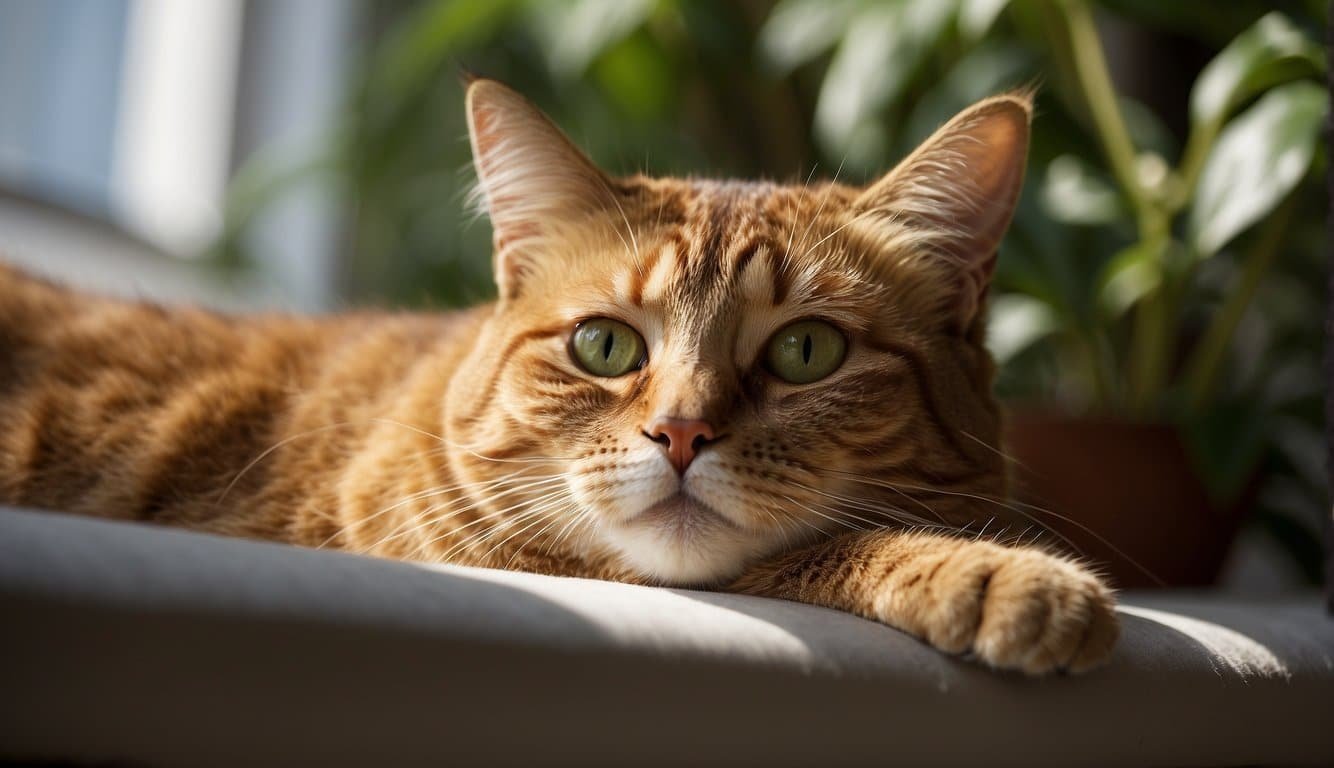Origins and Domestication
The journey of the domestic cat (Felis catus) from wild feline to beloved household pet is a tale of serendipity and human civilization. Genetic studies point to the African wildcat as a likely ancestor, with the domestication process beginning in the Middle East. Perhaps the cats were drawn to early agricultural settlements in the Fertile Crescent due to the abundance of rodents, thus embarking on an unspoken partnership with humans.
Findings from a study suggest that domestic cats may have originated in the Near East, hinting at a domestication origin there. Revealed through genetics, these ancestral lines of felines began to diverge from their wild counterparts over 9,000 years ago. The oldest known pet cat, discovered on Cyprus, dates back 9,500 years, underscoring the bond between cats and humans.
Ancient Egypt often takes the spotlight when discussing cat domestication. Their reverence for cats is well documented, with felines being associated with gods and goddesses, and even mummified like royalty.
Fast forwarding to today, careful breeding and natural selection have tailored the domestic cat into numerous breeds, each with unique genes and characteristics. Yet, even with their cushy lives as companions, modern cats have retained many of the traits of their wild ancestors, proving that cats might never be fully tamed.
Physical Characteristics

Domestic cats, which stem from Felis silvestris lybica, exhibit an array of physical traits that vary by breed but also share common characteristics that make them adept hunters and beloved pets. They belong to the mammalian family Felidae and exhibit typical carnivorous features, making them efficient in their role within the natural world.
Breeds and Coat
There is a remarkable variety among cat breeds, each with distinctive coat patterns and textures. The common tabby pattern is found across many breeds, characterized by its “M” shaped marking on the forehead. Siamese cats are known for their striking blue eyes and color-point coats, where the face, paws, and tail are a darker color than the rest of the body. The luxurious Persian breed is famed for its long, silky fur and sweet facial expression, while the Sphynx, naturally hairless, stands out for its exposed skin. Many cat enthusiasts find the Bengal cat’s coat fascinating for its leopard-like spots and rosettes. The size and weight of these breeds can vary significantly, with males often being larger than females.
- Longhaired breeds: Include Persians and Maine Coons, require regular grooming.
- Shorthaired breeds: Such as Siamese and Tabbies, often need less grooming.
- Coat colors: Range widely from white, black, brown, and orange to mixed patterns.
Sensory Capabilities
Cats are renowned for their extraordinary sensory abilities. Their hearing is one of the sharpest among mammals, allowing them to detect even the slightest rustle that could indicate the presence of prey. Vision is another forte, with cats’ eyes structured to capture the smallest movement and excelling in low light scenarios—perfect for nocturnal hunting. Moreover, cats possess delicate scent glands on their cheeks and paws, leaving subtle marks that establish territory or create a communal scent map for others of their kind.
- Hearing: Can detect a range of frequencies from 48 Hz to 85 kHz.
- Vision: Has a wide field of view of approximately 200 degrees.
- Teeth: Sharp canines reflect their carnivorous diet.
- Retractable Claws: Provide stealth and precision during a hunt.
Behavior and Lifestyle

Domestic cats exhibit a variety of behaviors that are deeply rooted in their ancestry. Understanding a cat’s natural instincts and how they adapt to modern living conditions is key to appreciating their unique lifestyle.
Hunting and Diet
Cats are born predators, and even when living comfortably as house pets, they retain their hunting instincts. They primarily target small creatures like mice, rats, and birds, which corresponds to their carnivorous diet. The solitary hunting nature of cats can be likened to lions, yet on a much smaller scale. Domesticated cats often engage in a play that mimics this predatory behavior, which helps maintain their sharp hunting skills and provides mental stimulation.
- Key Prey: Rodents and birds
- Hunting Style: Solitary, stealthy, pouncing
- Dietary Needs: Primarily carnivorous
Reproduction and Growth
The reproduction of domestic cats follows a familiar mammalian pattern, with a relatively short gestation period of around two months. Kittens are born blind and helpless, requiring significant care from the mother. The litter size can vary, but on average, cats give birth to about four kittens. Feral cats can breed frequently, leading to large populations around human settlements if not controlled.
- Gestation Period: Approximately 65 days
- Litter Size: Typically four kittens
- Development: Fast-growing, independent by 12 weeks
Social and Human Interaction
Cats have a dual nature when it comes to social interaction. While they are solitary hunters, they have developed a balance between independence and companionship, often forming strong bonds with humans. They have become one of the most popular pets worldwide due to their affectionate yet self-reliant demeanor. Cats can live comfortably in a human household, often adapting their lifestyle to their owner’s routine, which may include sleeping schedules and meal times.
- Independence: Balance between being a solitary hunter and companion
- Human Interaction: Often seek attention and interaction on their own terms
- Adaptation to Domestic Life: Influenced by owners’ habits and home environment
Communication
Communication in cats is a fascinating display of body language and vocal expression. Their communication methods include a variety of vocalizations, such as meows, purrs, hisses, and growls, as well as visual signals like tail movements, ear positions, and facial expressions. Cats are capable of conveying a broad range of emotions and intentions, from contentment and relaxation to aggression and fear. Wildcats, feral cats, and even the pampered house cat all share these fundamental communication behaviors.
- Vocalizations: Meows for attention, purrs for contentment, hisses for aggression
- Body Language: Tail flicking for irritation, slow blinks for trust, ears back for anger or fear
- Scent Marking: Less visible but equally important for establishing territory and signaling presence

